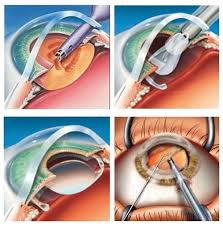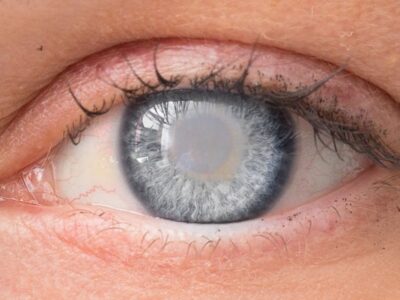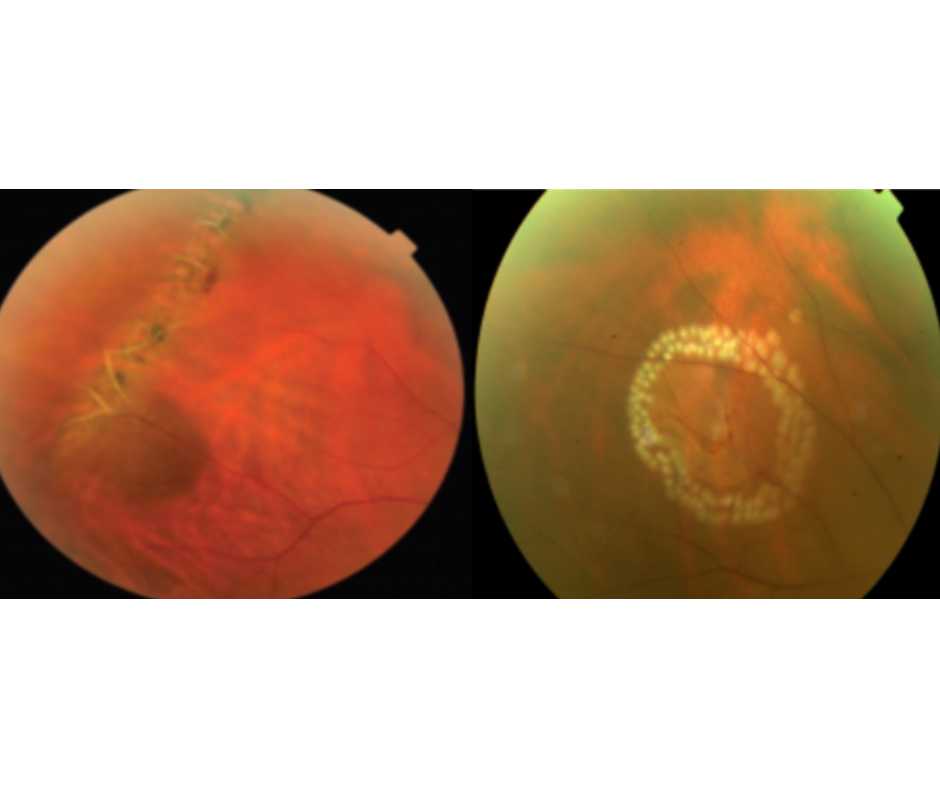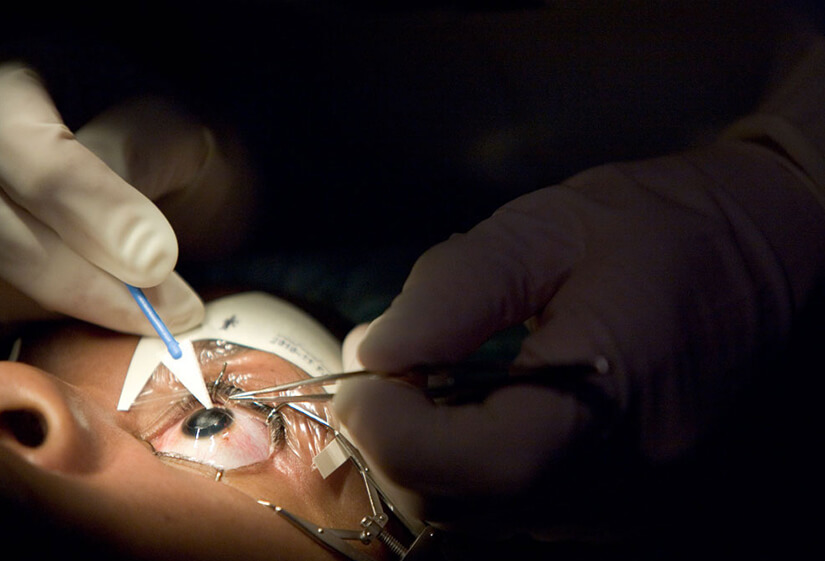Cataracts are a common eye condition that can significantly affect one’s vision as they age. Fortunately, cataract surgery has become a highly effective and safe procedure for restoring clear vision. Additionally, in this comprehensive guide, we’ll delve into the cataract surgery process, step by step, to help you better understand what to expect if you or a loved one are considering this procedure.
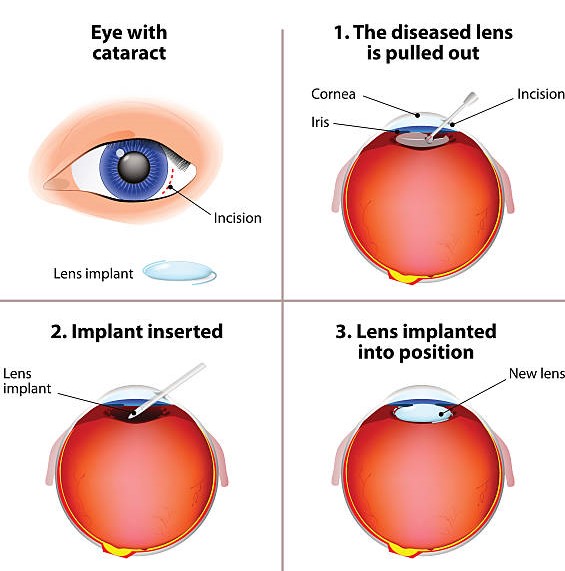
What Are Cataracts?
Before we explore the surgery itself, let’s start with the basics. Cataracts are the clouding of the eye’s natural lens, which is typically clear. Consequently, this clouding can lead to blurry vision, making it challenging to see clearly. Additionally, difficulty seeing at night becomes a common issue due to cataracts. Furthermore, individuals with cataracts often experience increased sensitivity to glare, further complicating their visual discomfort. Cataracts can develop slowly over time and are often associated with aging but can also result from other factors, such as diabetes or injury.
When Is Surgery Necessary?
Cataract surgery is recommended when cataracts start to interfere significantly with your daily life. Common signs that surgery may be necessary include:
- Blurred or hazy vision that affects your ability to read, drive, or perform daily tasks.
- Difficulty seeing at night, particularly when driving.
- Increased sensitivity to glare from lights.
- Double vision in one eye.
- A noticeable decline in color vision.
If you’re experiencing any of these symptoms, firstly, it’s essential to consult with an ophthalmologist for a comprehensive eye examination to determine if cataract surgery is the right course of action. Furthermore, their expertise will help you make an informed decision.
Cost of the Cataract Surgery
Here is a table showing the approximate cost of laser cataract surgery in India:
| Type of Surgery | Estimated Price (Per Eye) in INR |
|---|---|
| Standard Cataract Surgery | ₹25,000 – ₹50,000 |
| Laser-Assisted Cataract Surgery (FLACS) | ₹47,000 – ₹1,50,000 |
| Cataract Surgery with Monofocal IOL | ₹30,000 – ₹60,000 |
| Cataract Surgery with Multifocal IOL | ₹50,000 – ₹1,20,000 |
| Cataract Surgery with Toric IOL | ₹60,000 – ₹1,40,000 |
| Premium Lens Cataract Surgery | ₹80,000 – ₹2,00,000 |
Note: The cost varies based on the hospital, surgeon’s expertise, and the type of intraocular lens (IOL) chosen. It is best to consult with an eye specialist for an exact quote.
Preparing for Cataract Surgery process
Consultation and Evaluation
The first step towards cataract surgery is a consultation with an ophthalmologist. During this appointment, your eye doctor will perform a thorough evaluation of your eyes, including measuring the shape and size of your cataracts. This evaluation helps determine the type of intraocular lens (IOL) that will be used during the surgery.
Choosing the Right IOL
One of the significant advancements in cataract surgery is the ability to choose the type of IOL that suits your needs. Your options may include:
- Monofocal IOL: Provides clear vision at one distance, typically either near or far. Glasses may still be needed for certain activities.
- Multifocal IOL: Corrects vision at multiple distances, reducing the need for glasses.
- Toric IOL: Corrects astigmatism, further enhancing vision clarity.
Your surgeon will discuss these options with you to determine the best choice based on your lifestyle and visual requirements.
Medication and Pre-Operative Instructions
Your surgeon will provide you with specific pre-operative instructions, which may include using prescribed eye drops and discontinuing certain medications that could increase the risk of bleeding during surgery. Following these instructions is crucial to ensure a successful procedure.
The Cataract Surgery Process
Cataract surgery is typically an outpatient procedure that takes around 15 to 30 minutes. Here’s an overview of the process:
Anesthesia
Before the surgery begins, the medical team administers numbing eye drops to ensure your comfort throughout the procedure. You may also receive a mild sedative to help you relax.
Making an Incision
A small incision is made in the clear front part of the eye (the cornea) to access the clouded lens.
Removing the Cataract
The surgeon gently breaks the clouded lens into small pieces using ultrasound technology and then removes it from the eye.
Inserting the Intraocular Lens
Once your surgeon removes the cataract, they carefully insert the IOL that you both chose during the pre-operative consultation into the eye. It unfolds inside the eye, replacing the natural lens.
Closing the Incision for cataract surgery process
In most cases, the incision self-seals without the need for stitches. The medical team may place a protective shield or patch over the eye for a brief period after the surgery.
Recovery and Post-Operative Care for cataract surgery process
After cataract surgery, the medical staff will transfer you to a recovery area, where you will rest for a short period. It’s crucial to ensure that you have someone available to drive you home, as your vision may be temporarily blurred.
Your surgeon will provide you with post-operative instructions, which may include:
- Using prescribed eye drops to prevent infection and reduce inflammation.
- Avoiding strenuous activities and heavy lifting.
- Wearing sunglasses to protect your eyes from bright light.
Most patients experience significant improvements in their vision within a few days to weeks after surgery.
Author Details:
Dr. Sushruth Appajigowda holds a prominent position as a Cornea, Cataract, Glaucoma, and LASIK Surgeon in Bangalore. He serves as the chief Cataract and Refractive surgeon at Vijaya Nethralaya Eye Hospital, Nagarbhavi Bangalore. Renowned as one of the finest LASIK surgeons nationwide, he brings with him over 12+ years of experience across multiple LASIK platforms, including ZEISS, ALCON, SCHWIND, AMO, and Bausch and Lomb. Having successfully conducted over 5000 LASIK procedures, Dr. Sushruth holds the title of a Certified Refractive Surgeon and a Fellow of the All India Collegium Of Ophthalmology. Furthermore, he stands as a distinguished speaker at various National and International Forums, using his expertise to guide you in selecting the most suitable procedure based on your health requirements.

http://vijayanethralaya.com/link-in-bio/
Conclusion: Cataract Surgery Process
Cataract surgery is a highly successful procedure that can dramatically improve your vision and quality of life. By understanding the cataract surgery process, from consultation to recovery, you can approach this common procedure with confidence. If you or a loved one is dealing with cataracts, consult with an experienced ophthalmologist to explore your options and embark on the journey to clearer vision.
In conclusion, cataract surgery offers renewed hope for those affected by this vision-impairing condition. The advancements in technology and surgical techniques have made it a safe and effective solution to regain your visual clarity and enjoy life to the fullest. Don’t let cataracts hinder your vision any longer—take the first step towards a brighter future through cataract surgery.
FAQ:
1. Is cataract surgery painful?
No, cataract surgery is not painful. The procedure is done under local anesthesia, which numbs the eye. You may feel some pressure, but you should not experience pain.
2. How long does the surgery take?
Cataract surgery usually takes about 15 to 30 minutes. It is a quick and efficient procedure, and most patients can go home the same day.
3. What should I expect after the surgery?
You may experience mild discomfort, blurry vision, or sensitivity to light for a few days. You will be given eye drops to reduce inflammation and aid in healing.
4. How soon will I notice improved vision?
Many patients notice improved vision within a day or two after surgery, though full recovery may take a few weeks as the eye heals.
5. Are there any risks involved in cataract surgery?
While cataract surgery is generally very safe, there are risks, including infection, bleeding, or retinal detachment. However, complications are rare, and the success rate is very high.
6. How do I prepare for cataract surgery?
Your doctor will give you specific instructions. You may be advised not to eat or drink a few hours before surgery, and you should arrange for someone to drive you home afterward.
7. How long does it take to recover from cataract surgery?
Most people recover within a few days, but full healing can take a few weeks. It’s important to follow your doctor’s post-surgery care instructions to ensure proper healing.
8. Can I drive after cataract surgery?
You should avoid driving immediately after surgery. Most patients can resume driving within a few days to a week, depending on their vision recovery and doctor’s advice.

